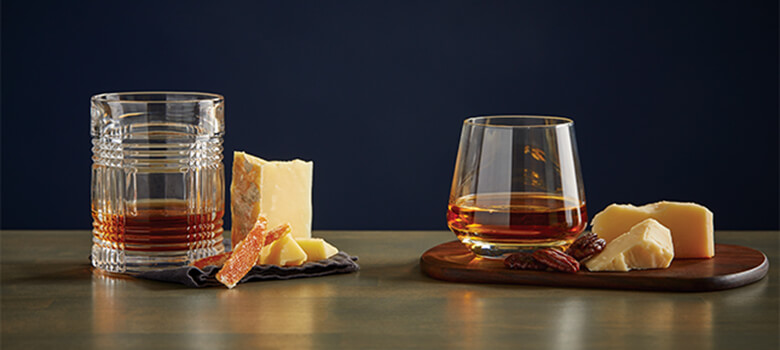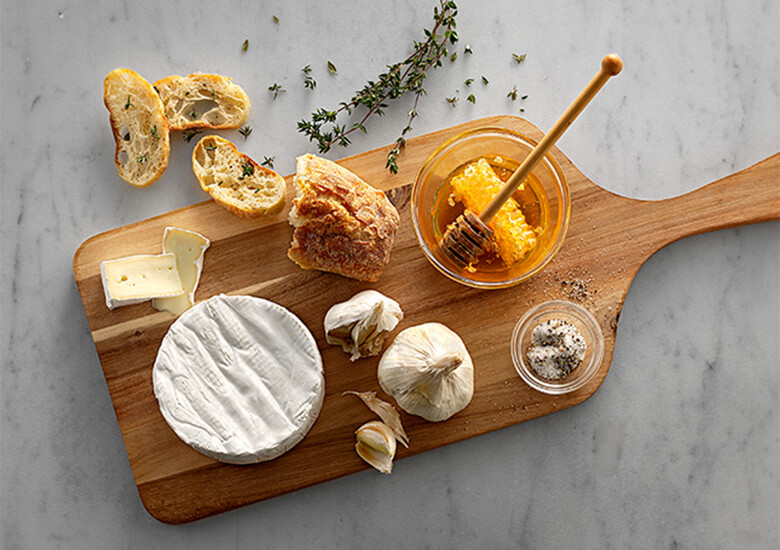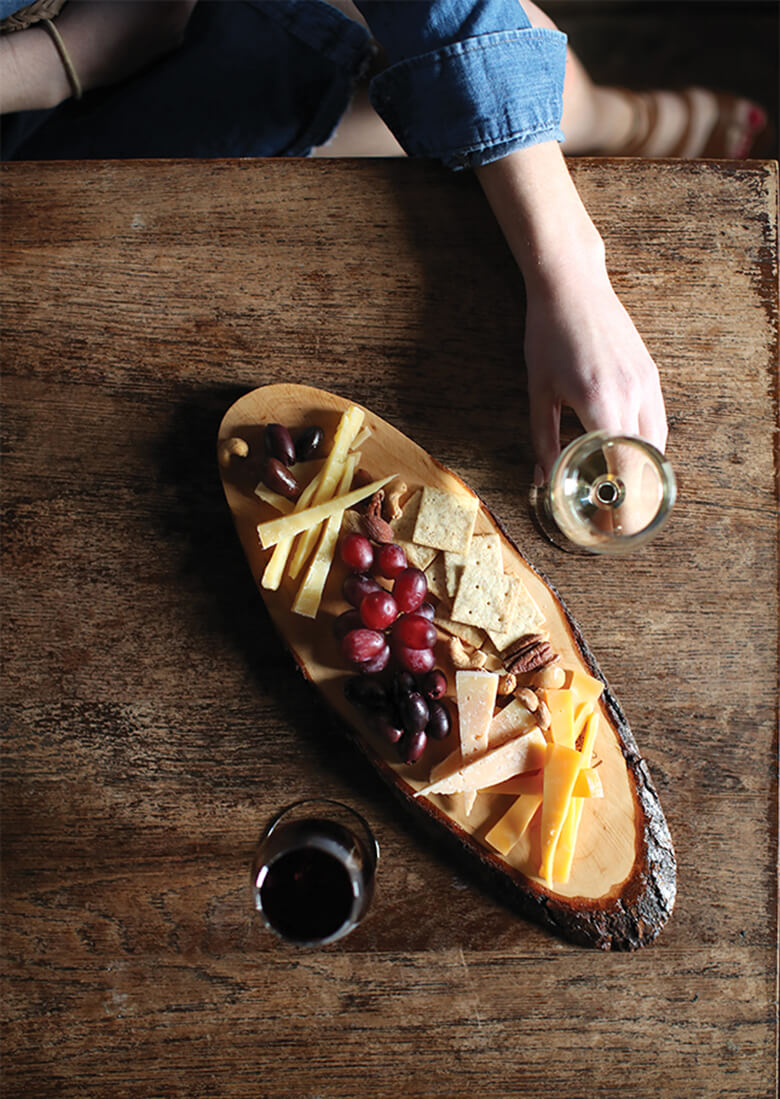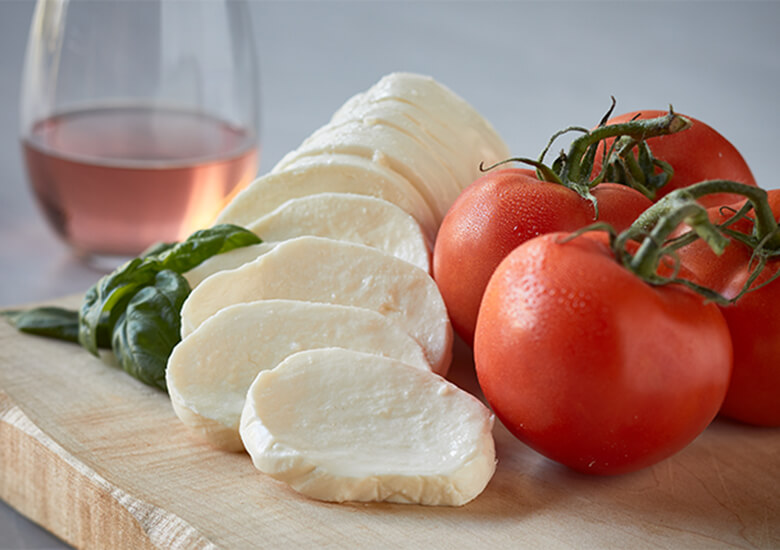Some of the most common questions we get from budding cheese enthusiasts are about cheese pairing.
That’s why we interviewed award-winning food and drink author, cheese pairing expert, and fellow Wisconsin Cheese Lover, Jeanette Hurt, and put together this list of top cheese and wine pairing tips.

Whether you’re planning a cheese board for a fancy Friday night or just need to know why that gouda and riesling you tried went so well together, we’ve got the answers.
The 5 Tenets Of Cheese Pairing
The only rule of cheese pairing is that there are no rules. Your taste buds are truly your best guide and even the most unlikely pairings will delight some cheese lovers. With that said, we have some basic cheese pairing guidelines to help you when indecision strikes.
Match strengths

One of the first questions to ask when pairing cheese with wine, beer, or really anything is if the strengths of the flavors match. If they don't, one side of the pair will overpower the other. For example, a delightfully pungent limburger is going to require an equally assertive pairing so both sides of the relationship get equal billing with your taste buds.
Similarly, if you have a light-bodied wine, you’ll want a delicate cheese to match.
When you match the strengths, you get to experience a blend of flavors rather than an avalanche of just one.
Go with where it grows
When you’re not sure what to pick, Jeanette suggests going by heritage. Uncertain what would go well with Sartori’s Classic parmesan? Opt for an Italian wine like pinot grigio.
If the cheese and its new friend both originate from geographically close regions, chances are good they pair well together.
Find flavor bridges

What exactly is a flavor bridge? Like the name suggests, flavor bridges are ingredients you can use to create a stronger connection between cheese and your food or drink of choice.
Let’s get practical with an example. One of our favorite flavor bridges that works with a variety of cheeses is plain old honey.
Bridges can help connect two otherwise contrasting flavors.
For example, honey is a perfect flavor bridge between a salty, briny cheese like feta and sweet port wine.
Think about contrast

Opposites attract, and sometimes the best pairings are the ones that possess distinctly different flavors.
Jeanette loves pairing a creamy, salty, and slightly earthy blue cheese with a sweet dessert wine like sherry. Just add a touch of honey as a bridge, and you’ve got a perfect pairing.
Start small
Jeanette recommends starting with no more than 3-5 cheeses and 1-2 wines. This way you can keep your pairings focused and keep your palate from getting overwhelmed. It also lets you build your knowledge and experience in manageable and memorable steps.
We know: there are just too many amazing cheeses out there and you want to try all of them. But trust us on this one. Take your time and savor as you go. Oh, and don’t forget to use our guide to cheese tasting so you can take notes!
Avoid These Cheese Pairing Mistakes
While we stand by our earlier sentiment that there are no rules when it comes to cheese pairing, the process of finding a perfect match can take a bit of practice. (That's where the above guide to cheese tasting is so darn handy.) Give yourself a better shot at success by avoiding these common pairing mistakes.
Don’t pair strong cheeses with delicate wine, beer, or spirits

If you hold tangy, complex, and often pungent cheeses like brick close to your heart, you’ll want them on your cheese board. However, take care when it comes to pairing. Remember: you always want to match the strengths.
If your wine of choice is a delicate riesling or a medium-bodied pinot noir, you’ll want more gentle cheeses to match.
Don’t do full-size portions
We love our giant wheels of cheese, but when you’re planning a cheese night, you want to make sure you’re preparing an appropriate amount. Jeanette says, “When you’re planning a cheese party, you want to plan for 2-3 ounces of cheese per person.”
You can always bring out more cheese, but remember that many fresh cheeses must be discarded after being left out for more than two hours—and nothing is more tragic than throwing out leftover cheese. Fear not, though, Cheese Love. We cover everything you need to know about cheese storage here.
Don’t just pick challenging cheeses

While cheese pairing is a great opportunity to try some more adventurous cheese varieties, Jeanette advises you not to stray too far from your comfort zone: “You want to give [guests] something familiar, but a step up… If they like cheddar, you can introduce them to something like a BellaVitano, or a slightly aged gouda.”
You can still get that sharp-edged gorgonzola you’ve been eyeing, just make sure the other cheeses you pick are more familiar.
Answer All Your Cheese Pairing Questions

Ready to learn more about cheese pairing? We’ve covered everything you need to know about pairing cheese with wine, food, beer, and more. Start with our beginner’s guide or just dive into whatever topic suits your fancy.
Explore a world of cheese pairing at your fingertips!
Wine And Cheese Pairing
Liquor And Cheese Pairing
Cheese Board Essentials
Pair away!
Flex your cheese pairing muscles and get creative, or try one of our cheese board recipes, like this Summertime Cheese Board or this Sweet and Savory Brunch Cheese Board.
If you want to cook a full meal try our selection of over 300 handcrafted recipes featuring Wisconsin Cheese. Share your creation with us on Instagram or Facebook and become part of the largest cheese community in the world!
Want to make cheese pairing even easier? You can plan your cheese board ahead of time and get your favorite Wisconsin Cheeses delivered right to your door with our continuously updated list of cheesemakers and retailers that allow you to order cheese online. Award-winning Wisconsin Cheese is just a click away.
FAQs
What goes well with cheddar cheese?
Cheddar is a wonderfully agreeable cheese that gets along with nearly any pairing. For wine, you can’t go wrong with a red like pinot noir or a white like riesling.
If you’re more of a beer person, you can turn to a hoppy IPA but make sure the hoppiness of the IPA matches the cheese. An aged cheddar will need to be paired with something like a double IPA to balance the flavors.
For side snacks, we’d recommend honey or fig jam for a touch of sweetness and crackers for some crunch.
What fruit goes with cheese?
Fruit is one of our favorite ways to elevate and showcase the taste of any cheese. Pears, peaches, dried apricots, cherries, figs, and tart apples, like Granny Smith, make great pairings with a variety of cheeses. Load these onto any cheese board, and you’ll be in 'gouda' shape.
What cheeses should go on a cheese board?
The best part of making your own cheese board is that you can add whatever cheese you want! We recommend picking 3-5 cheeses that are approachable but still a little more daring than those you usually choose. Looking for specific suggestions? Here’s a list of five cheeses we wouldn’t hesitate to put on any cheese board:
What wine pairs well with cheese?
If we had to pick just one wine to pair with cheese, it would be a riesling. Rieslings are white wines generally known for being dry, slightly sweet, and just acidic enough to cut through umami-rich cheeses like parmesan. A riesling will pair with nearly any cheese on some level.
If you’re more of a red wine person, try a Beaujolais or pinot noir—something medium-bodied and fruity without being too tannic or astringent. Wines like cabernet sauvignon, although delicious, might overwhelm more delicate cheeses with their tannins.
